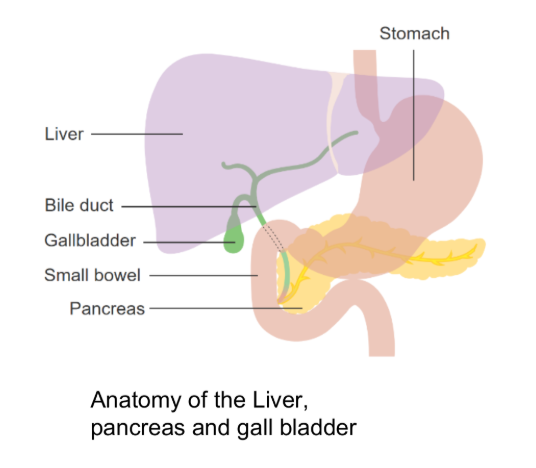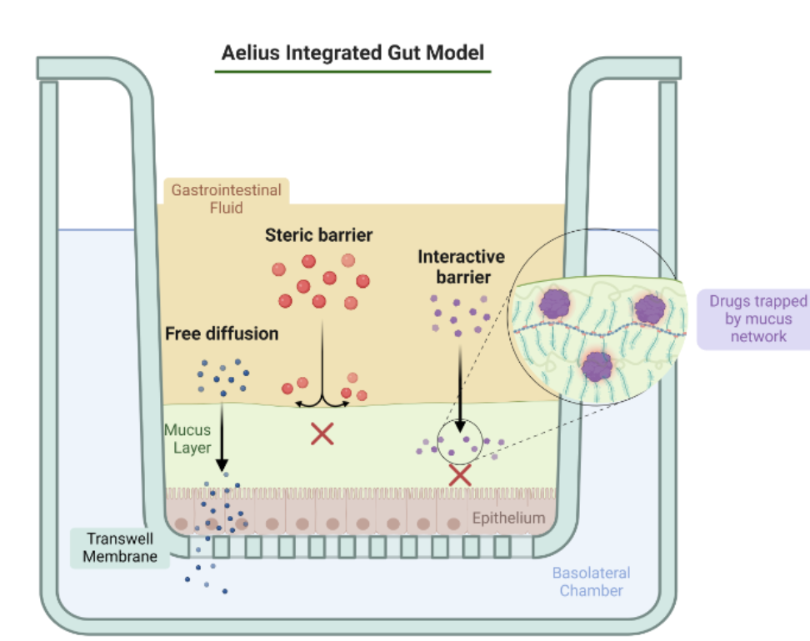Importance of Bile
Including bile in our in vitro models is a vital step to creating a physiologically relevant system including digestive fluids, mucus and absorptive cells
What is bile?
Bile is a complex solution produced by the liver and stored in the gall bladder. The main components of bile are bile salts, phospholipids/lecithin, cholesterol, conjugated bilirubin, and water.
Bile has two important roles in the body, the elimination of waste products, and aiding the digestion and absorption of fats and fat-soluble molecules.

The functions of bile: elimination of waste
In the process of elimination, waste compounds are conjugated by liver hepatocytes to make them more water soluble for excretion, these conjugated compounds are then added to bile. During the normal process of digestion, bile from the gall bladder and liver passes through the common bile duct and into the duodenum of the small intestine via the Sphincter of Oddi.
Waste products present in the bile pass through the small intestine and colon where they leave the body in the faeces. The main waste product is conjugated bilirubin, a waste product produced by the liver during the breakdown of old red blood cells. Bilirubin gives bile its yellowish-brown hue and contributes to the brown colour of stool. Changes in stool colour, such as white stool, suggests bile related issues such as a blocked bile duct.
The functions of bile: aiding digestion and absorption of fat and fat-soluble molecules
Fats and fat soluble molecules are essential to life, but for absorption must pass from the aqueous environment of the digestive tract, across the phospholipid membranes of absorptive cells, and in to the aqueous tissues and fluids of the body.
Bile salts secreted in bile are crucial to this process and are responsible for the emulsification of dietary lipids and the formation of mixed micelles. Bile salts are amphipathic molecules with a hydrophobic side and a hydrophilic side.
In the digestive process, bile salts and phospholipids are important for the emulsification of large dietary lipid droplets. Their amphipathic nature allows them to coat the surface of these droplets and break them down into much smaller droplets. This vastly increases the surface area for pancreatic lipase digestion, thereby increasing lipid digestion. The products of digestion, such as monoacylglycerol, can be incorporated into mixed micelles with bile salts and phospholipids, allowing the dietary fats to make their way to the epithelium for absorption. These mixed micelles are crucial for the solubility and absorption of fat-soluble vitamins and drugs such as vitamin D. These molecules are incorporated into mixed micelles and which can access the epithelium for absorption.
The primary bile acids cholic acid and chenodeoxycholic acid are produced by the liver and conjugated with either taurine or glycine, greatly improving their water solubility.
Primary bile acids that reach the colon are dehydroxylated by the colonic microbiome into secondary bile acids deoxycholic acid and lithocholic acid. These are absorbed by the colon and sent back to the liver where they are conjugated and recirculated in bile.
In vitro modelling of intestinal absorption
Commonly used cell models of intestinal absorption do not include bile, because this would be cytotoxic to cells with direct exposure. Commonly in digestive only models, where bile is included, this is individual commercial bile salts, and not a physiologically relevant mixture of whole bile.
Bile is known to have significant effects both on membrane permeability, and on the solubility and absorption of certain molecules.
With our biocompatible and protective mucus layer, Aelius Biotech is able to include bile in our models. By integrating a mucus layer into our digestion models, we can incorporate the digestive, mucus permeation and epithelial absorption phases, all in a single integrated system – with physiologically relevant digestive fluids containing bile.

Bibliography
Complete Your Digestive Model
Discover how integrating Bile into our models enhances the physiological relevance of your in vitro studies
Speak to an Expert

